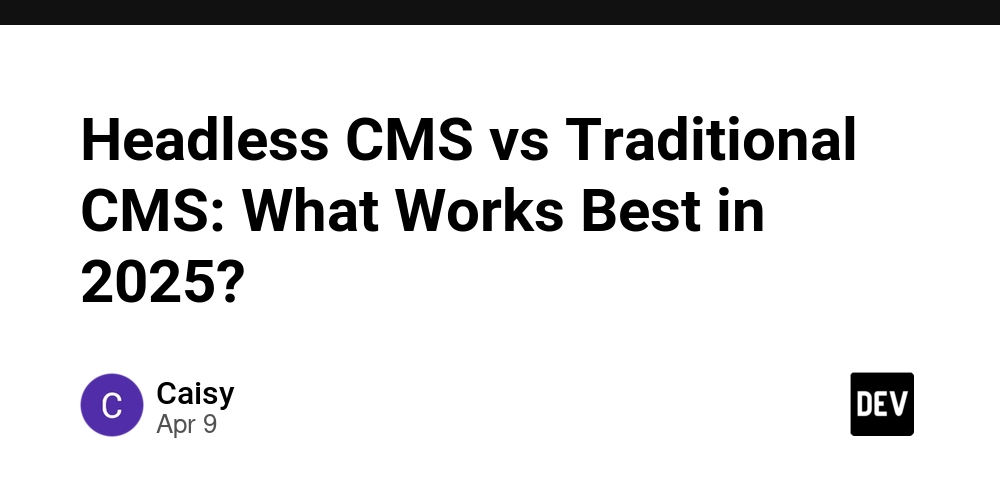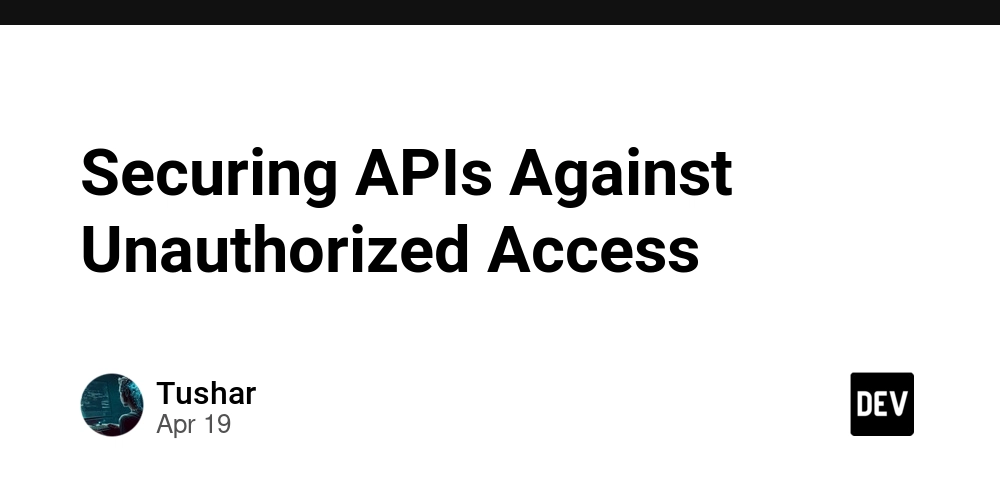Headless CMS vs Traditional CMS: What Works Best in 2025?
Content management is changing. Fast. What worked a decade ago—drag-and-drop templates and one-size-fits-all themes—might not cut it anymore, especially for developers and enterprises looking for speed, flexibility, and scale. That’s where the debate heats up: headless CMS vs traditional CMS. Let’s break down the differences, when to use what, and why 2025 is the year devs are leaning more toward headless solutions. What is a Headless CMS (And Why Is Everyone Talking About It)? In simple terms, a headless CMS is a back-end-only content management system. Unlike traditional CMS platforms (think WordPress or Joomla), a headless CMS doesn’t dictate how content gets displayed. Instead, it lets developers use APIs to fetch and display content wherever they want—web, mobile apps, smartwatches, you name it. This decoupling of front-end and back-end is exactly what gives headless platforms their edge. ** Headless CMS vs Traditional CMS: The 2025 Reality Check Here’s how the two stack up: ** Flexibility: Headless CMS gives developers the freedom to build with modern front-end frameworks like React, Vue, or Next.js. Traditional CMS? You're tied to their templates unless you start hacking. Performance: With headless, content is delivered via API, meaning faster load times and a smoother UX. That’s crucial in 2025 when speed is a major SEO factor. Omnichannel Readiness: Want to push content to your app, website, and IoT device simultaneously? Headless CMS makes that easy. Security: Less attack surface. No public-facing backend. Enough said. Collaboration: Enterprise-grade headless CMS platforms are made for team workflows—content teams, devs, designers all working in sync. On the other hand, traditional CMS platforms are great for smaller projects, quick launches, and when you don’t have a dev team on hand. But they start to feel clunky fast when scaling. Why More Enterprises Are Making the Shift We’re seeing a clear trend: more companies—especially at the enterprise level—are switching to headless CMS for enterprise use cases. The reasons? They want to future-proof their digital infrastructure. They need to integrate with custom stacks and workflows. They demand speed and scalability that traditional systems can’t keep up with. For many, it’s not even a choice anymore. It’s a necessity. Pricing, Demos, and Dev-First Tools Matter Let’s talk real-world concerns—headless CMS pricing varies widely. Some platforms offer generous free tiers for startups, while others scale up with enterprise features and SLAs. Also, look for a headless CMS demo that gives you a real taste of the workflow. Try before you commit. If you're building with JavaScript frameworks, definitely explore options that are optimized as headless CMS for JS—it’ll make your life so much easier. **So, Which One Works Best in 2025? ** If you need a CMS for a blog or small business site and want a fast launch, traditional CMS might still do the trick. But if you're a developer building modern web apps, an enterprise team scaling globally, or just someone who values flexibility and performance—the best headless CMS in 2025 is going to be the one that doesn’t slow you down. ** Thinking About Making the Move? Try Caisy ** Caisy is built for modern teams and developers. It's fast, cloud-native, and perfect for enterprises and startups alike. With a clean UI, GraphQL API, and collaborative content workflows, it fits right into your dev stack. Looking for the best headless CMS in 2025? Want to explore headless CMS pricing or try a headless CMS demo?

Content management is changing. Fast. What worked a decade ago—drag-and-drop templates and one-size-fits-all themes—might not cut it anymore, especially for developers and enterprises looking for speed, flexibility, and scale.
That’s where the debate heats up: headless CMS vs traditional CMS. Let’s break down the differences, when to use what, and why 2025 is the year devs are leaning more toward headless solutions.
What is a Headless CMS (And Why Is Everyone Talking About It)?
In simple terms, a headless CMS is a back-end-only content management system. Unlike traditional CMS platforms (think WordPress or Joomla), a headless CMS doesn’t dictate how content gets displayed. Instead, it lets developers use APIs to fetch and display content wherever they want—web, mobile apps, smartwatches, you name it.
This decoupling of front-end and back-end is exactly what gives headless platforms their edge.
**
Headless CMS vs Traditional CMS: The 2025 Reality Check
Here’s how the two stack up:
**
Flexibility: Headless CMS gives developers the freedom to build with modern front-end frameworks like React, Vue, or Next.js. Traditional CMS? You're tied to their templates unless you start hacking.
Performance: With headless, content is delivered via API, meaning faster load times and a smoother UX. That’s crucial in 2025 when speed is a major SEO factor.
Omnichannel Readiness: Want to push content to your app, website, and IoT device simultaneously? Headless CMS makes that easy.
Security: Less attack surface. No public-facing backend. Enough said.
Collaboration: Enterprise-grade headless CMS platforms are made for team workflows—content teams, devs, designers all working in sync.
On the other hand, traditional CMS platforms are great for smaller projects, quick launches, and when you don’t have a dev team on hand. But they start to feel clunky fast when scaling.
Why More Enterprises Are Making the Shift
We’re seeing a clear trend: more companies—especially at the enterprise level—are switching to headless CMS for enterprise use cases. The reasons?
They want to future-proof their digital infrastructure.
They need to integrate with custom stacks and workflows.
They demand speed and scalability that traditional systems can’t keep up with.
For many, it’s not even a choice anymore. It’s a necessity.
Pricing, Demos, and Dev-First Tools Matter
Let’s talk real-world concerns—headless CMS pricing varies widely. Some platforms offer generous free tiers for startups, while others scale up with enterprise features and SLAs.
Also, look for a headless CMS demo that gives you a real taste of the workflow. Try before you commit.
If you're building with JavaScript frameworks, definitely explore options that are optimized as headless CMS for JS—it’ll make your life so much easier.
**So, Which One Works Best in 2025?
**
If you need a CMS for a blog or small business site and want a fast launch, traditional CMS might still do the trick.
But if you're a developer building modern web apps, an enterprise team scaling globally, or just someone who values flexibility and performance—the best headless CMS in 2025 is going to be the one that doesn’t slow you down.
**
Thinking About Making the Move? Try Caisy
**
Caisy is built for modern teams and developers. It's fast, cloud-native, and perfect for enterprises and startups alike. With a clean UI, GraphQL API, and collaborative content workflows, it fits right into your dev stack.
Looking for the best headless CMS in 2025? Want to explore headless CMS pricing or try a headless CMS demo?





























![[Webinar] AI Is Already Inside Your SaaS Stack — Learn How to Prevent the Next Silent Breach](https://blogger.googleusercontent.com/img/b/R29vZ2xl/AVvXsEiOWn65wd33dg2uO99NrtKbpYLfcepwOLidQDMls0HXKlA91k6HURluRA4WXgJRAZldEe1VReMQZyyYt1PgnoAn5JPpILsWlXIzmrBSs_TBoyPwO7hZrWouBg2-O3mdeoeSGY-l9_bsZB7vbpKjTSvG93zNytjxgTaMPqo9iq9Z5pGa05CJOs9uXpwHFT4/s1600/ai-cyber.jpg?#)










































































































































![[The AI Show Episode 144]: ChatGPT’s New Memory, Shopify CEO’s Leaked “AI First” Memo, Google Cloud Next Releases, o3 and o4-mini Coming Soon & Llama 4’s Rocky Launch](https://www.marketingaiinstitute.com/hubfs/ep%20144%20cover.png)





























































































































![[FREE EBOOKS] Machine Learning Hero, AI-Assisted Programming for Web and Machine Learning & Four More Best Selling Titles](https://www.javacodegeeks.com/wp-content/uploads/2012/12/jcg-logo.jpg)








































































![Rogue Company Elite tier list of best characters [April 2025]](https://media.pocketgamer.com/artwork/na-33136-1657102075/rogue-company-ios-android-tier-cover.jpg?#)








































































_Andreas_Prott_Alamy.jpg?width=1280&auto=webp&quality=80&disable=upscale#)






























































































![What’s new in Android’s April 2025 Google System Updates [U: 4/18]](https://i0.wp.com/9to5google.com/wp-content/uploads/sites/4/2025/01/google-play-services-3.jpg?resize=1200%2C628&quality=82&strip=all&ssl=1)










![Apple Watch Series 10 Back On Sale for $299! [Lowest Price Ever]](https://www.iclarified.com/images/news/96657/96657/96657-640.jpg)
![EU Postpones Apple App Store Fines Amid Tariff Negotiations [Report]](https://www.iclarified.com/images/news/97068/97068/97068-640.jpg)
![Apple Slips to Fifth in China's Smartphone Market with 9% Decline [Report]](https://www.iclarified.com/images/news/97065/97065/97065-640.jpg)




































































































































